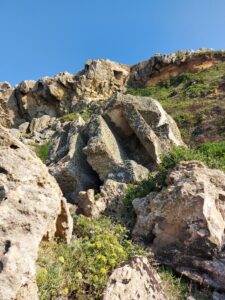 Sardinia, thanks to its mineral
Sardinia, thanks to its mineral  resources and fertile lands, represented throughout ancient times a commercial and military outpost of extraordinary relevance in the western Mediterranean area. Phoenicians first and Punics ones later, attracted by the potential of the island, continuously frequented the landings and gradually settled there. Around the middle of the 4th century BC, although Nuragic resistance pockets were surviving, Sardinia was fully-fledged part of the Carthaginian Empire and proved to be included in the Punic monetary circuit recently established. Half a century later a production of bronze coins was started by local workshops. The presence of Punic coins, therefore, affects all contexts of Sardinian social life, from the strictly economic to those in which they have a symbolic or, in general, extra-economic function. Numerous coins have been found in the grave goods of the island’s Punic necropolises, such as Tuvixed. such as that of Tuvixeddu or Tharros, but also – with a clearly different function – in places of worship, which often overlapped with the nuragic ones, or in residential contexts.
resources and fertile lands, represented throughout ancient times a commercial and military outpost of extraordinary relevance in the western Mediterranean area. Phoenicians first and Punics ones later, attracted by the potential of the island, continuously frequented the landings and gradually settled there. Around the middle of the 4th century BC, although Nuragic resistance pockets were surviving, Sardinia was fully-fledged part of the Carthaginian Empire and proved to be included in the Punic monetary circuit recently established. Half a century later a production of bronze coins was started by local workshops. The presence of Punic coins, therefore, affects all contexts of Sardinian social life, from the strictly economic to those in which they have a symbolic or, in general, extra-economic function. Numerous coins have been found in the grave goods of the island’s Punic necropolises, such as Tuvixed. such as that of Tuvixeddu or Tharros, but also – with a clearly different function – in places of worship, which often overlapped with the nuragic ones, or in residential contexts.
